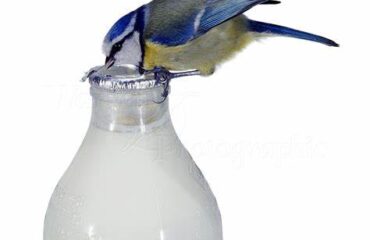
Am sure we have all come across small trivial activities that we do on a daily basis which radically changes our energy level and improves our productivity levels for the day. We would have woken up with a lower back pain, but a few front stretches and bends makes the pain vanish and you are back at your productive best. Or you leave your home with a small headache in the morning, but by the time you reach your office after your morning drive and your normal office calls in between, the pain has suddenly vanished. Or how a few deep breaths transform your sleepy self into a high state of energy and flow.
While there will be numerous such cases in our day-to-day life, I have selected the case of Alcoa to establish this concept as it also provides a clearly documented version with clearly measurable results.
Alcoa produces varies types of Aluminum products some of which are-soda cans, window and door frames, automobile wheel rims and aircraft landing gear. Work for these begin in the bauxite mines with huge digging machines. Then the bauxite must be refined into alumina which is not a useable commodity. These are then converted to liquid aluminum by removing the oxygen using very high power which is often equivalent to what is needed to light up a town. But no one buys liquid Aluminum, so these are converted into the needed products through the required molds under extreme heat and pressure.
In 1987 when Paul O’ Neill was appointed as the CEO of Alcoa, in his first presentation to Wall Street investors and stock market analysts he proclaimed that he intended to make Alcoa the safest company in the United States and that we would be targeting zero injuries to achieve this objective. In 1987 the odds of getting hurt seriously enough to miss work at Alcoa was 2 percent per year. This meant that for a worker working with them for 25 years the risk of getting hurt at least once would be 40 percent. With 90,000 workers at Alcoa at that time it meant that seven or more workers were getting hurt on the job every day.
O’ Neill and team built their strategy from the fundamental realization that things go wrong because there is insufficient understanding of how to make them right. So, one of the first steps that was taken was that for every instance of anyone getting hurt in an Alcoa facility O’Neill had to be notified of the same within 24 hours of the same happening. This had to be done directly by the business unit presidents. Now for the business unit presidents to report to the CEO they would have to hear from the Vice Presidents within an even shorter time frame, and the Vice Presidents would have to know about the injuries from their direct reports even faster. With the number of organization layers in a large organization like Alcoa what it meant was that the report of the injury would have to start its upwards journey as soon as it had happened for it to reach O Neill within 24 hours.
What this also meant is that since the incident would have to be investigated immediately to understand more about the same before the same was being reported, all perishable information about the same would be available in real time and could be collected. In an industrial environment, temperatures of the machines can change, pressure may drift, and voltage or current situations might change. Also, human memory about the incident was also likely to change over time and could also be influenced by feedback from several other partied. So, the idea here was to see the problem when and where it occurs and swarm to investigate it so that all the information needed to understand the actual situation were collected before it perished or faded or spoiled as once this information was lost it became impossible to recreate the problem, nail down what caused it and take necessary measures that will prevent its recurrence.
There was also a second rule made by O’ Neill and team. Not only were the Business Unit Presidents expected to inform the CEO within 24 hours about any injury or near misses, but within 2 days they had to report what the initial investigation had revealed, its causes and what was being done to prevent the same from occurring in future. To satisfy this rule what Alcona’s learned to do were the following:
- real time problem recognition
- diagnosis and
- counter measures that are required to ensure that these do not happen in future.
If there was an accident or a near miss in a facility the shop floor workers and production engineers could get assistance from on site experts in each of the fields. If the expertise proved inadequate there was a pool of experts at the facility and business unit level who could pitch in. If they also could not crack the case the corporate HO would dispatch additional support including outside experts as required.
To spread the information and knowledge gained from each incident Alcoa invested in a corporate wide information system which was very unique and rare at that time, since this was way before the internet came into prominence.
Now if we try to understand what happened at Alcoa from a habit loop perspective:
The Cue in this case was an employee injury or any near misses
The Routine of the habit was the need to report the incident within 24 hours to the CEO by the unit president and the need to revert back to the CEO on the reasons and the preventive measures taken to prevent such incidents from occurring in future
The Reward in this case was growth and recognition for those who embraced the system and went about implementing the same effectively and implemented process to ensure worker safety. In fact, the system was so strongly implemented that one of business unit president was dismissed over safety related issues.
During this period of about 20 years when workers safety was aggressively pushed and promoted, the safety record in the United States improved by 60% from 4.4 workdays which were lost to about 2 percent that of Alcoa dropped from 2 percent to less than 0.1 percent an improvement of 95%…
It is interesting to note that even when the workers safety focus started Alcoa was almost having a 50% better average compared to the United States average. But the improvement was not only limited to workers safety. During the twenty-year period in consideration the stock price appreciated by 700 percent compared to the 470 percent increase in the Dow Jones industrial average. There was also huge increase in productivity across all the plants. Improved process design leading to meeting market requirements much faster. Improvement in rolling time, reduction in inventory etc. to name a few…
How could all these have been possible by just establishing a habit loop for workers safety?
In most organizations middle managers play an essential but bureaucratic role. They convey high level goals that are set at more higher ranks, restating, and implementing them as objectives relevant to the part of the firm that they are responsible for. From the lower ranks they convey information and data so that the same can be used by the concerned decision makers. It is these middle managers who enable organizations to allocate resources and co-ordinate activities.
What Alcoa did by building the habit aimed at worker safety was it changed the organizations ability to manage work in such a way as to see problems, solve problems where they were seen in order to build new knowledge and spread the knowledge so that the same would be useful throughout the organization. This also enabled Leaders to build and develop detailed process knowledge in order for them to understand what was occurring and why. The leaders also had to coach and train others to be able to see deficiencies in how work was conducted and then develop and validate corrective measures.
Such Habits which appear small in nature which bring about a series of changes are often referred to as Keystone Habits. Keystone habits have the power to start a chain reaction changing other habits as they move through an organization. They can influence how people work, eat, play, live, spend and communicate. Keystone habits are those that matter more than others in remaking business and lives as they start a process that over time transform everything.
To understand how to identify the keystone habits for yourself and your organizations keep watching this space for more…



